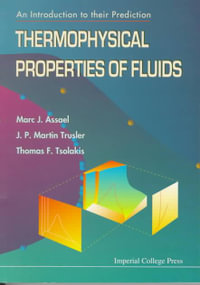
Transport Phenomena Fundamentals
4th Edition
By: Joel L. Plawsky
Hardcover | 12 March 2020 | Edition Number 4
At a Glance
Hardcover
RRP $284.00
$224.50
21%OFF
Aims to ship in 7 to 10 business days
ISBN: 9781138080560
ISBN-10: 113808056X
Series: Chemical Industries
Published: 12th March 2020
Format: Hardcover
Language: English
Number of Pages: 864
Audience: College, Tertiary and University
Publisher: Taylor & Francis Ltd
Country of Publication: GB
Edition Number: 4
Edition Type: New edition
Dimensions (cm): 25.4 x 17.78 x 4.6
Weight (kg): 1.7
Shipping
| Standard Shipping | Express Shipping | |
|---|---|---|
| Metro postcodes: | $9.99 | $14.95 |
| Regional postcodes: | $9.99 | $14.95 |
| Rural postcodes: | $9.99 | $14.95 |
How to return your order
At Booktopia, we offer hassle-free returns in accordance with our returns policy. If you wish to return an item, please get in touch with Booktopia Customer Care.
Additional postage charges may be applicable.
Defective items
If there is a problem with any of the items received for your order then the Booktopia Customer Care team is ready to assist you.
For more info please visit our Help Centre.
You Can Find This Book In
This product is categorised by
- Non-FictionEngineering & TechnologyIndustrial Chemistry & Manufacturing TechnologiesIndustrial ChemistryChemical Engineering
- Non-FictionEngineering & TechnologyBiochemical Engineering
- Non-FictionSciencePhysicsMaterials & States of MatterPlasma Physics
- Non-FictionMedicinePre-Clinical Medicine & Basic Sciences
- Non-FictionScienceChemistry
- Non-FictionEngineering & TechnologyEnvironmental Science
- Non-FictionScienceBiology, Life SciencesLife Sciences in General
- Non-FictionMedicineNursing & Ancillary ServicesBiomedical Engineering























